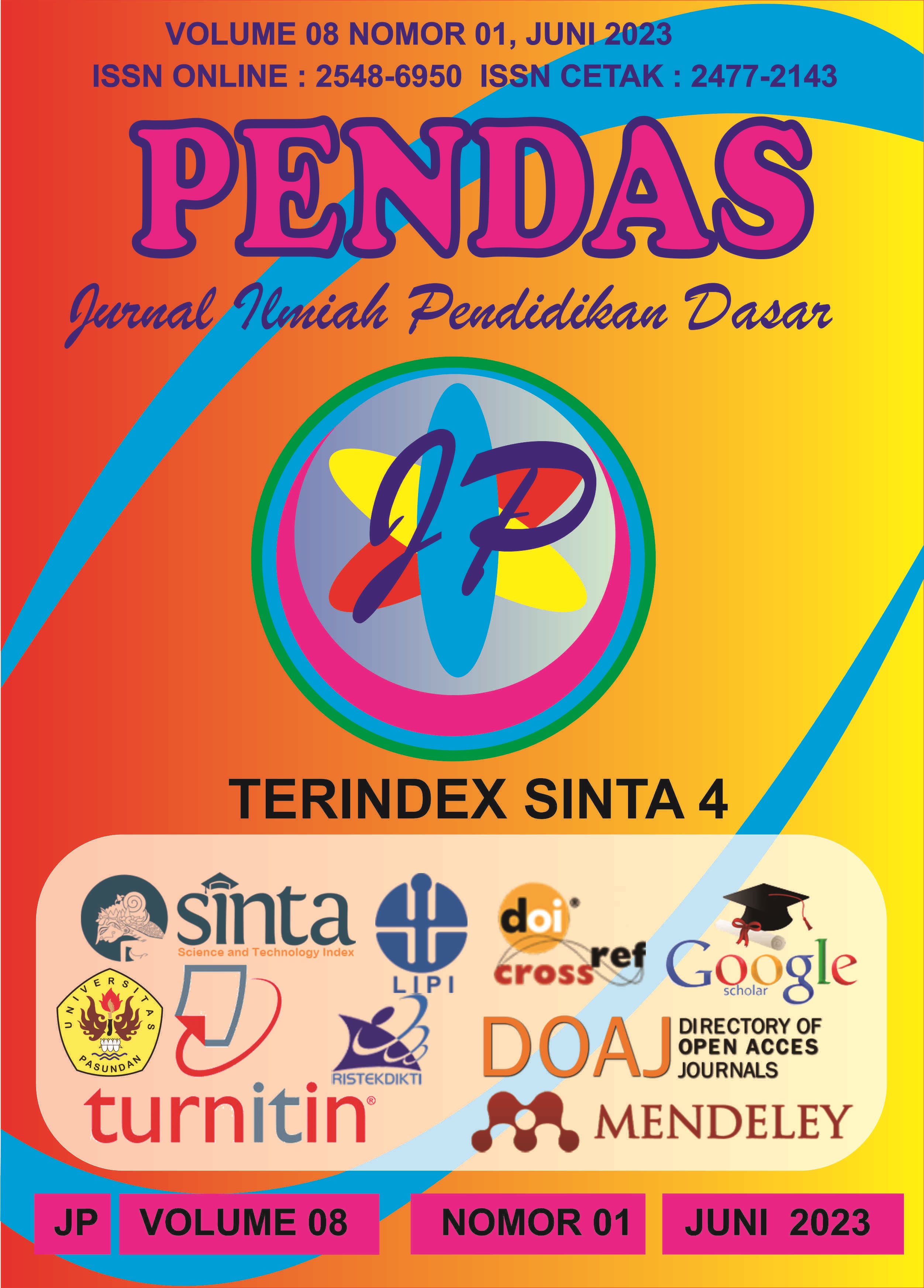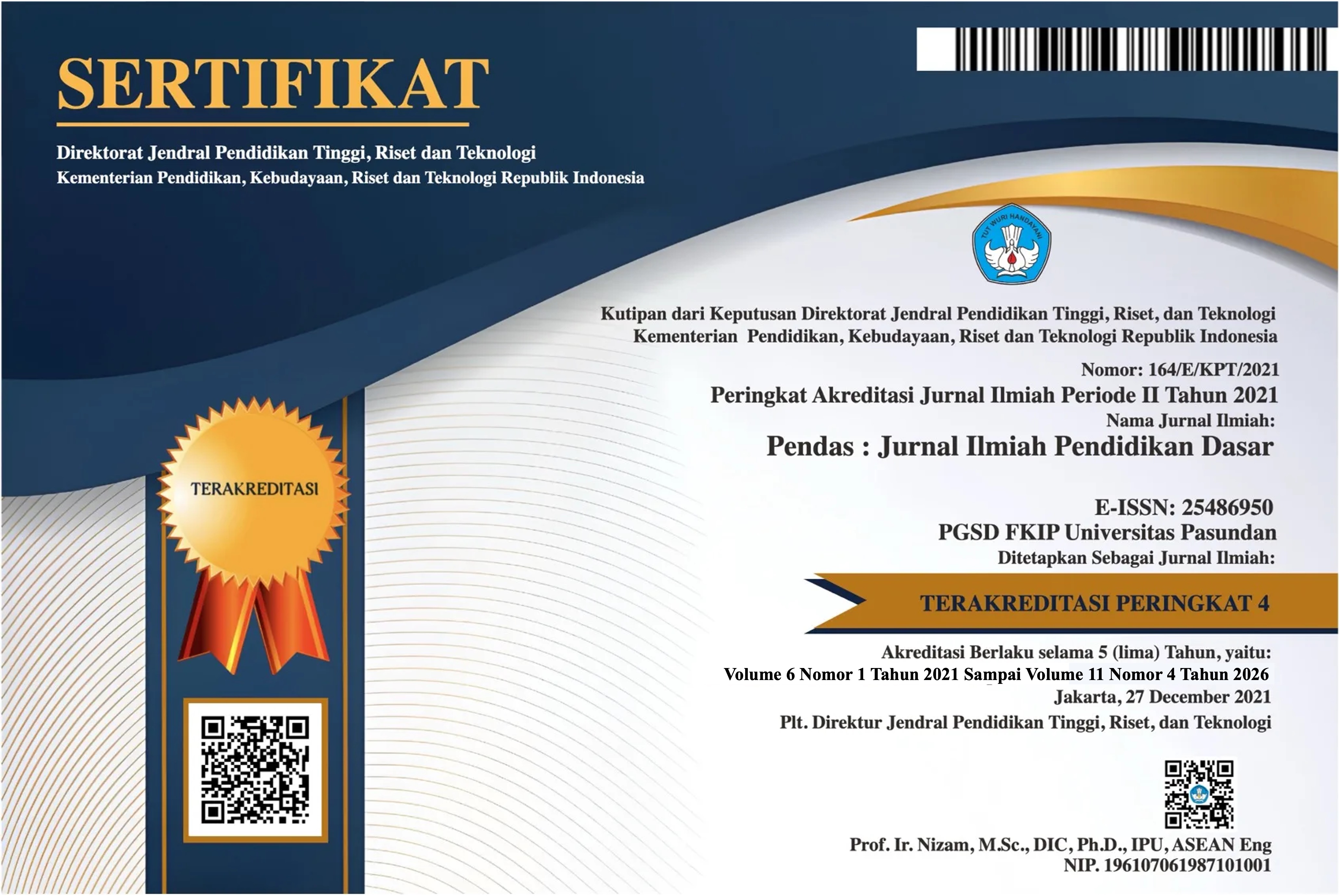ANALISIS KEMAMPUAN SPASIAL SISWA PADA MATERI BANGUN RUANG SISI DATAR DITINJAU DARI GAYA BELAJAR DI KELAS VIII SMPN 6 MATARAM TAHUN AJARAN 2022/2023
DOI:
https://doi.org/10.23969/jp.v8i1.8033Abstract
Spatial ability is the ability to visualize images or objects that exist in the mind and change them in a real form, which includes the ability to recognize shapes and objects accurately, and make changes to an object in the mind. This study aims to describe the spatial abilities of students who have visual, auditory, and kinesthetic learning styles in the material of flat sided shapes in class VIII SMP Negeri 6 Mataram in the 2022/2023 academic year. The type of research used in this research is descriptive qualitative research with data collection techniques using triangulation techniques (questions, test questions, and interviews). The selection of subjects was carried out using a purposive sampling technique by considering the balance of the three learning styles in a class. Based on these considerations, it was obtained that class VIIB had 12 visual students, 9 auditory students, and 12 kinesthetic students. Then the data on spatial ability test results were analyzed using scoring guidelines for each indicator. The results of the research show that the achievement of spatial abilities in the three learning styles is different. Students with a visual learning style are able to fulfill the four spatial ability indicators, namely imagining, conceptualizing, solving problems, and finding patterns. Students with an auditory learning style are able to fulfill one indicator of spatial ability, namely conceptualization, are lacking in indicators of imagination and problem solving, and have not been able to fulfill the indicators of finding patterns. Students with a kinesthetic learning style are able to fulfill one indicator of spatial ability, namely, imagination. Students with a kinesthetic learning style lack indicators of finding patterns, and have not been able to meet conceptual and problem solving indicators. However, there are kinesthetic students who are able to fulfill the three indicators of spatial ability, namely imagining, conceptualizing, and solving problems.Downloads
References
DePorter, B., & Hernacki, M. (1999). Quantum Learning Membiasakan Belajar Nyaman dan Menyenangkan. New York: Dell Publishing .
Hasanah, R. Z. (2021). Gaya Belajar. Bandung: Literasi Nusantara.
Hass, S. C. (2003). Algebra for Gifted Visual-Spatial Learners. Gifted Education (Spring), 34(1), 34–43.
Isnaini, N., Sugiarti, T., Anka Monalisa, L., Trapsilasiwi, D., Oktavianingtyas, E., Kalimantan, J., & Jember, K. T. (2020). Kemampuan Spasial Siswa dalam Menyelesaikan Soal PISA Konten Shape and Space Berdasarkan Gaya Belajar. Jurnal Universitas Jember, 11(2), 23–35. https://doi.org/https://doi.org/10.19184/kdma.v11i2.19801
I’zaul, F. (2020). Kemampuan Visual Spasial dalam Pemecahan Masalah Geometri ditinjau dari Gaya Belajar Siswa Kelas VIII MTS Nurul Huda Trenggalek. 1–189.
Kristiawan, M. (2016). Filsafat Pendidikan (1st ed.; L. Hendri, Ed.). Retrieved from https://mahdumunri.com/wp-content/uploads/2022/03/FILSAFATPENDIDIKAN_M-KUSTIAWAN.pdf
Mamik. (2015). Metodologi Kualitatif (1st ed.; M. C. Anwar, Ed.). Sidoarjo: Zifatama Publisher. Retrieved from http://repo.poltekkesdepkes-sby.ac.id/5047/1/Metode%20Kualitatif.pdf
Mardani. (2021). Kemampuan Spasial Geometri (1st ed.). Ngoro Jombang: Kun Fayakun.
Mukaromah, S. J., & Hasyim, M. (2017). Pengaruh Kemampuan Verbal, Numerik, dan Spasial Terhadap Kemampuan Menyelesaikan Soal Cerita. Jurnal Pendidikan Dan Pembelajaran Matematika (JP2M), 3(1), 94–107.
Nugroho, N. P. (2017). Analisis Kemampuan Spasial Siswa Kelas VII Smp Negeri 2 Sawit Dalam Menyelesaikan Soal Materi Segiempat Berdasarkan Level Berpikir Van Hiele. https://doi.org/http://eprints.ums.ac.id/57626/16/NASKAH%20PUBLIKASI.pdf
Nurbaeti, Suryanti, S., & Pursitasari, I. D. (2015). Hubungan Gaya Belajar dengan Keterampilan Berpikir Kritis dan Kemampuan Kognitif Siswa Pada Mata Pelajaran Kimia di Kelas X SMKN 1 Bungku Tengah. E-Jurnal Mitra Sains, 3(2), 24–33.
Purborini, S. D., & Hastari, R. C. (2018). Analisis Kemampuan Spasial Pada Bangun Ruang Sisi Datar Ditinjau Dari Perbedaan Gender. Jurnal Derivat, 5, 49–58. Retrieved from https://doi.org/10.31316/j.derivat.v5i1.147
Soraya, W., Utami, C., & Nirawati, R. (2021). Analisis Kemampuan Spasial Matematis Siswa Ditinjau Dari Teori Bruner Pada Materi Dimensi Tiga Kelas X Mas Yasti Singkawang. Jurnal Pendidikan Matemetaika Indonesia, 6(1), 19–23.
Sugiyono. (2013). Cara Mudah Menyusun Skripsi, Tesis, dan Disertasi (3rd ed.). Yogyakarta: Alfabeta Bandung.
Sugiyono. (2017). Metode Penelitian Kualitatif. Alfabeta.
Wulansari, A. N., & Adirakasiwi, A. G. (2019). Analisis Kemampuan Spasial Matematis Siswa Dalam Menyelesaikan Masalah Matematika. Jurnal Universitas Singaperbangsa Karawang, 2, 1b, 504–513. Retrieved from https://journal.unsika.ac.id/index.php/sesiomadika/issue/view/193
Downloads
Published
Issue
Section
License
Copyright (c) 2023 Pendas : Jurnal Ilmiah Pendidikan Dasar

This work is licensed under a Creative Commons Attribution 4.0 International License.



















